Ryan Hall's Blog, page 268
April 12, 2016
‘It’s Everybody’s Marathon’ — Watch the Latest Trailer for ‘BOSTON’
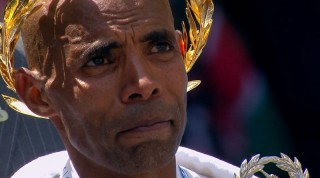
Here’s the latest 60-second sneak peek of BOSTON—a documentary directed by Jon Dunham (director of Spirit of the Marathon) about the Boston Marathon. This trailer, featuring Shalane Flanagan and Meb Keflezighi, will get plenty of play in Boston this week—at the Boston Marathon finish line, at the expo and even at Fenway Park.
The film is scheduled to be released in spring 2017.
The post ‘It’s Everybody’s Marathon’ — Watch the Latest Trailer for ‘BOSTON’ appeared first on Competitor.com.
April 11, 2016
Ingrown Toenails: How to Treat and Prevent Them
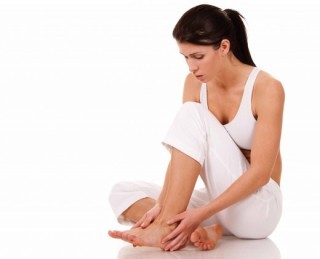
Photo: iStock
This article first appeared on Triathlete.
Dr. Jordan Metzl discusses the symptoms of ingrown toenails, and provides advice on treating and preventing the troublesome foot pain.
The Symptoms of Ingrown Toenails
Pain, sometimes worse than just annoying, where the toenail has grown into the skin around it. The entire area is usually red and tender to the touch.
What’s Going On In There?
Ingrown toenails typically start when a nail, usually the one on the big toe, grows or is pushed into the soft, tender tissue alongside it. People whose toes are somewhat convex are more susceptible, but anyone can get one. Athletes who spend a lot of time in tight shoes or who put a lot of pressure on their toes with explosive movements are prime candidates for ingrown nails.
While they arise mostly as the result of improper cutting, ingrown nails can also be caused by any number of accidents or heavy use, such as in long-distance running. Stubbing your toe can also cause them, as can dropping a heavy object on your toe.
It’s important to address ingrown nails quickly. Trying to ignore them will only lead to more pain while running, changing direction or jumping—basically, all the things an athlete needs his or her feet for. If the area becomes infected, you’ll have a serious problem. But most ingrown nails can be taken care of with the home-based remedies listed here.
Fixing Ingrown Toenails
Try an over-the-counter product. Many products will help soften the skin and the nail, and many of them have a soothing anti-inflammatory agent like tea tree oil or menthol. Dr. Scholl’s Ingrown Toenail Pain Reliever and Outgro Pain Relieving Liquid are examples. Read and follow the directions to the letter, and don’t use these types of products if you have diabetes, impaired circulation or any kind of infection.
Use cotton. The ultimate solution is to have the toenail eventually grow out over the skin folds at its side. Start by soaking your foot in warm water for 5 to 10 minutes to soften the nail (add 1 teaspoon of salt for every pint of water). Dry it, then gently insert a wisp (not a wad) of sterile cotton beneath the burrowing edge of the nail. The cotton will lift the nail slightly so it will grow past the sore skin. Apply an antiseptic over the cotton as well to guard against infection. Change the cotton daily until the nail grows out.
Prevent It
Cut nails with precision. Never cut your nails too short. Cut straight across with a sharp, substantial straight-edged clipper. Never cut a nail in an oval shape that causes the leading edge to curve down into the skin at the sides.
Buy the right shoes. Tight shoes, especially around the toes, can help cause ingrown nails. This applies to casual and athletic footwear. When shopping for shoes, remember the following tips: Shop in the afternoon or evening, when your feet are at their largest, and wear athletic socks to get a proper fit. If ingrown nails are a chronic problem for you, wear wide-toed or open-toed shoes when you can.
Forget the V. Don’t fall for the old wives’ tale about cutting a V-shaped wedge in the middle of the nail’s top edge. The thinking is that the sides will grow toward the open center and away from the ingrown edge. Not true. All nails grow outward from the base.
When To Call A Doctor
If your toe becomes infected, you need to see a doctor. Signs to look for include swelling, redness, pain and warmth when touched. Pus-filled blisters may also form. The doctor will most likely treat your infection with soaks, removal of infected skin and antibiotics.
The post Ingrown Toenails: How to Treat and Prevent Them appeared first on Competitor.com.
Photos: The 2016 Hapalua, Hawaii’s Half Marathon
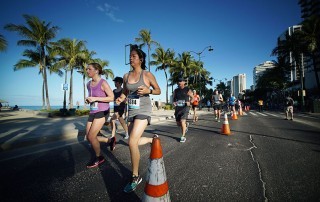
More than 6,000 runners took part in The Hapalua, dubbed “Hawaii’s Half Marathon.” The race took runners on a tour of coastal Honolulu, starting and finishing near Waikiki Beach.
The elite division, called “The Chase,” pitted elite runners against the best local runners from Hawaii in a handicapped format. The winner of that race was Isabella Ochichi of Kenya.
Here are photos from the actions, taken by Cory Lum/Getty Images for The Hapalua – Hawaii’s Half Marathon:
Photo Gallery
1 of {count}
Back to Start
View Larger Image

Runners gather along Kalakaua Avenue. Photograph by Cory Lum/Getty Images for The Hapalua - Hawaii's Half Marathon.
View Larger Image

Photograph by Hiroyuki Kaijo.
View Larger Image

Photo by Cory Lum/Getty Images for The Hapalua - Hawaii's Half Marathon
View Larger Image

Photo by Cory Lum/Getty Images for The Hapalua - Hawaii's Half Marathon
View Larger Image

Volunteers hand out water to runners along Monsarrat Avenue. Photograph by Cory Lum/Getty Images for The Hapalua - Hawaii's Half Marathon.
View Larger Image

A runner enjoys water sprayed from a hose along the race route. Photograph by Cory Lum/Getty Images for The Hapalua - Hawaii's Half Marathon.
View Larger Image

The Hapalua 2016 - Hawaii's Half Marathon
Photo by Cory Lum/Getty Images for The Hapalua - Hawaii's Half Marathon
View Larger Image

The Hapalua 2016 - Hawaii's Half Marathon
Runners head toward Diamond Head along Kalakaua Avenue. Photograph by Cory Lum/Getty Images for The Hapalua - Hawaii's Half Marathon.
View Larger Image
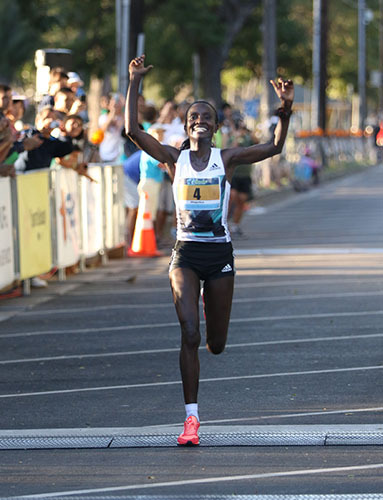
The Hapalua 2016 - Hawaii's Half Marathon
Isabella Ochichi crosses the finish line. Photo by Cory Lum/Getty Images for The Hapalua - Hawaii's Half Marathon
View Larger Image

The Hapalua 2016 - Hawaii's Half Marathon
Photo by Cory Lum/Getty Images for The Hapalua - Hawaii's Half Marathon
View Larger Image

The Hapalua 2016 - Hawaii's Half Marathon
Photo by Cory Lum/Getty Images for The Hapalua - Hawaii's Half Marathon
View Larger Image

Runners rest at Kapiolani Park after runningi. Photograph by Cory Lum/Getty Images for The Hapalua - Hawaii's Half Marathon.
View Larger Image

Runners enjoy 'shaved ice' at Kapiolani Park after finishing. Photograph by Cory Lum/Getty Images for The Hapalua - Hawaii's Half Marathon.
View Larger Image

The Hapalua 2016 - Hawaii's Half Marathon
Photo by Cory Lum/Getty Images for The Hapalua - Hawaii's Half Marathon
Related Galleries

Photos: 2016 Rock ‘n’ Roll Raleigh Marathon and 1/2

Photos: 2016 Shamrock Shuffle in Chicago

Photos: 2016 IAAF World Half-Marathon Championships

Photos: From Coast to Crater, an Endurance Adventure on Maui

More Galleries
The post Photos: The 2016 Hapalua, Hawaii’s Half Marathon appeared first on Competitor.com.
Photos: 2016 Zion 100 Miler
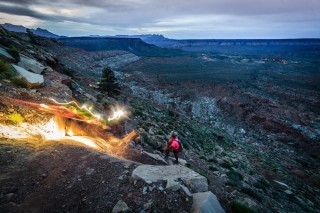
One hundred thirty seven runners conquered a challenging 100-mile course through the southern Utah desert adjacent to Zion National Park over the weekend. Masazumi Fujioka of Mill Creek, Wash., won in 17 hours, 36 minutes and 50 seconds. Kathryn Drew of Vancouver, B.C., was the top women’s finisher in 23:01:49, only 9 minutes up on second-place finisher Amber Weibel. Runners also participated in 100K, 55K and half-marathon options. Check out these awesome images of the event from photographer Derrick Lytle.
RELATED: 8 Epic Running Adventures In America’s National Parks
Photo Gallery
1 of {count}
Back to Start
View Larger Image

2016 Zion 100 Mile
Photo: Derrick Lytle
View Larger Image

2016 Zion 100 Mile
Photo: Derrick Lytle
View Larger Image

2016 Zion 100 Mile
Photo: Derrick Lytle
View Larger Image

2016 Zion 100 Mile
Photo: Derrick Lytle
View Larger Image

2016 Zion 100 Mile
Photo: Derrick Lytle
View Larger Image

2016 Zion 100 Mile
Photo: Derrick Lytle
View Larger Image

2016 Zion 100 Mile
Photo: Derrick Lytle
View Larger Image

2016 Zion 100 Mile
Photo: Derrick Lytle
View Larger Image

2016 Zion 100 Mile
Photo: Derrick Lytle
View Larger Image

2016 Zion 100 Mile
Photo: Derrick Lytle
View Larger Image

2016 Zion 100 Mile
Photo: Derrick Lytle
View Larger Image

2016 Zion 100 Mile
Photo: Derrick Lytle
View Larger Image

2016 Zion 100 Mile
Photo: Derrick Lytle
View Larger Image

2016 Zion 100 Mile
Photo: Derrick Lytle
View Larger Image

2016 Zion 100 Mile
Photo: Derrick Lytle
Related Galleries
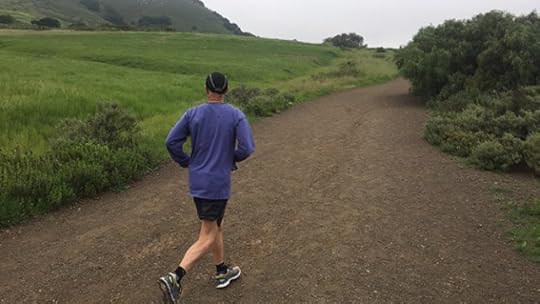
Photos: Trail Running in San Luis Obispo, California

Photos: 2016 Way Too Cool 50K
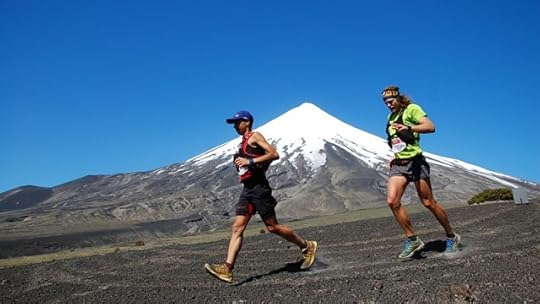
Photos: A Glimpse Inside The Volcano Ultra Trail Races in Chilean Patagonia

Photos: 2015 Brazos Bend 100

More Galleries
The post Photos: 2016 Zion 100 Miler appeared first on Competitor.com.
Next Gen: Nike Unveils Innovative Free RN Motion
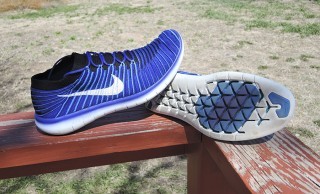
The Nike Free RN Motion will hit stores on May 5. Photo: Jonathan Beverly
From its introduction in 2004, the idea of the Nike Free, as the name suggests, was to let the foot move as it wished. The principle was that a shoe should act as an extension of the foot, enhancing its cushioning properties but not interfering with or trying to control any of its motion. Nike’s new Free RN Motion ($150), which the company will roll out on May 5, takes this concept to a new level.
One of the challenges of making a shoe fit is that the foot’s shape is not static. As you move through the stride the arch lengthens and flattens, the toes splay and flex, the instep arches upward. These changes are not insignificant. “In our research on foot movement, we found that the foot is expanding in both directions—medial and lateral—up to two sizes in width and an entire size in length,” says Chuck Gatchell, VP Run Natural at Nike.
The best most shoes can do to accommodate this movement is to bend at the right places and to not restrict the foot’s expansion by being longer and wider. The Free RN Motion goes one step farther. Rather than flex grooves, the sole is molded in interconnected geometric shapes that push and pull on each other as the shoe flexes. Unlike most materials that get narrower as they stretch—think about pulling a ball of bubble gum out of your mouth—this sole displays auxetic properties: the accordion-like ability to widen as it stretches. Just like the foot, the sole of the Free RN distance gets both longer and wider as it moves through the stride. The shapes, angles and spaces of the midsole molding differ in each part of the sole, matching the movement and purpose of each region of the foot.
In addition to the new flex properties, this Free RN Motion has a two-layer midsole, co-molded so they act as one unit, similar to the Free RN Distance released last year. A bouncy core of rubber-infused Lunar foam sits on inside, just beneath the foot. Wrapping it is an updated, softer version of the flexible IU foam that has formed the sole of all Frees. Stack heights are similar to the previous Free 4.0, with approximately a 4mm heel-toe drop. The top of the midsole is contoured such that the foot sits within a molded sidewall that extends higher under the arch.
The stretchy Flyknit upper completes the molds-to-your-foot feel. What Nike is calling a 3D Flyknit, the sock-like material has raised ribs wrapping across the foot from midfoot to toe, provide a minimal structure to hold the foot without restricting any of its motion. The heel wrap is soft, with no controlling structure—one of the core characteristics of Nike’s “natural” line—topped with a thin, stretchy ankle cuff with a convenient split overlap in front for ease of entry. Underfoot the strobel—the layer between your foot and the sole that ties the upper down—is as thin and flexible as the upper, not restricting the shoe’s movement or blocking the feel of the bouncy foam beneath.
After a few runs in them, I can say that the shoe performs as promised. Whereas in most shoes, even minimalist ones, you can feel movement of your foot within the shoe under the arch, ball and toes, the Free RN Motion stays next to the skin, above and below the foot, throughout the full stride. I wore them having a few blisters and hot spots from a long run in other shoes and quickly forgot which part of my skin was sore as there was no friction between the shoe and my foot.
The sole felt like it was expanding and moving like an extended bottom of my foot—closer than any shoe to date of having simply grown an extra inch of padding. The sole moved so well with my foot I almost felt I could pick up a towel with my toes while wearing them. I felt in touch with the ground, interacting with it without any interfering angles or forces.
And yet the shoe didn’t feel minimal—the cushioning underfoot is enough so you don’t have to brace yourself for touchdown on any surface, but they don’t feel at all marshmallowy. They performed nimbly doing 200ms at mile pace on the track, and felt comfortable and supportive on an easy 7.5-miler over concrete, dirt and metal bridge grates. The geometries of the sole provide a subtle stability that makes them feel more mainstream than expected when on the run.
Bottom line is a shoe that should please fans of the Free line and may attract others from both ends of the spectrum—those who felt the Frees weren’t minimal enough and those who didn’t think they could run in Frees.
The post Next Gen: Nike Unveils Innovative Free RN Motion appeared first on Competitor.com.
How to Watch the 2016 Boston Marathon
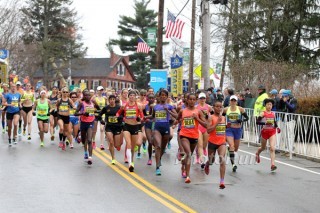
Photo: PhotoRun.net
The live broadcast of the Boston Marathon is moving to NBCSN in 2016, instantly scaling the number of households it can be seen in. In recent years, the race was on the now-defunct Universal Sports and its smaller footprint.
That’s good news for running fans with cable television. Here are some details to get you ready to watch the Boston Marathon race day on April 18.
National Television
NBCSN will have 4-1/2 hours of coverage on Marathon Monday, with the broadcast starting at 8:30 a.m. ET and lasting until 1 p.m. (the elite women start at 9:32 a.m. and the elite men and first wave start at 10 a.m.)
In addition, NBC-owned Universal HD will broadcast a preview show on Sunday, April 17 at 4 p.m. ET, and play an encore of the race at 8 p.m. on Monday, April 18.
Online
In addition to the television options, the Boston Marathon broadcast will be livestreamed on the NBC Sports Live Extra app, which can be downloaded for free to your smartphone or tablet, or found on platforms like Apple TV and Amazon Fire TV.
To access the content, you need to provide login credentials from your television provider. On web browsers, the stream is available at nbcsports.com/live-extra.
Local Television
For those in the Boston area, CBS affiliate WBZ-TV will have coverage throughout the day, from 7 a.m. to 3 p.m. ET. In addition, a course guide and finish-line cam will be set up on its website, CBSBoston.com
The post How to Watch the 2016 Boston Marathon appeared first on Competitor.com.
Everything You Need To Know About Running In 14 Words
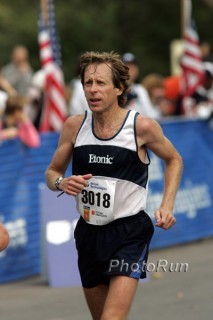
Four-time Boston Marathon champion Bill Rodgers knows a thing or two about running. Photo: www.photorun.net
A while ago, I read Marathoning by Bill Rodgers. Published in 1980, the year Rodgers achieved the last of his four Boston Marathon victories, the book interweaves autobiography and advice to other runners. Rodgers took an intuitive, non-intellectual approach to the sport, which the book reflects. He believed that running was a simple sport that was best done in a simple way. “Sometimes people tend to make running too complicated,” he writes on page 1.
Running is like diet in this regard. People tend to make nutrition too complicated as well. The nutrition writer Michael Pollan was aware of this problem and famously addressed it by creating a diet philosophy that consisted of seven words: “Eat food. Not too much. Mostly plants.”
Inspired by Rodgers and Pollan, I sat down to see how few words could be used to say everything a runner needs to know about running. I got it down to 14:
Build step by step. Push yourself, but not too hard. Learn. Keep it fun.
The rest is details. Some of those details are important, but a runner should not get wrapped up in them to the degree that they distract him or her from these four simple princples. That said, let’s unpack the principles a little.
RELATED: Why Are Workout And Race Times Different?
Build Step By Step
The principle of patient, incremental progress is the first principle of running. The ability to run improves with running, but not instantaneously. It takes time. You stimulate improvement by running a little more or a little harder than you’re used to doing. If you try to do more than a little more than you’re used to, you’ll break down. That’s why it has to happen one step at a time.
There are two levels of building: short-term and long-term. Short-term building entails building fitness step by step toward your next important race. Unless you’re already experienced, you probably can’t realize your ultimate potential in time for your next race, and you shouldn’t expect to. The idea is to build as much fitness as you realistically can in that time. It takes many years of consistent running to become the best runner you can be.
Rodgers never ran more than 35 miles a week in high school and he didn’t run much more than that in college—and he never regretted easing into serious running in this manner. He felt it all worked out for the best in the long run.
RELATED: Beating The Post-Marathon Blues
Push Yourself, But Not Too Hard
Hard work is rewarded in running. In fact, hard work is the main path to improvement. Expecting to improve as a runner without working harder is like expecting to get more money out of your bank account without having put more in it. Too many runners try to convince themselves that they can improve by means other than pushing themselves more. They try to improve by shuffling the pieces around. They believe that if they can just do a little work, but do it more scientifically, they will run faster. This attitude is a copout.
Bill Rodgers didn’t train scientifically at all. His friends in the Greater Boston Track Club could talk him into doing any given workout on any given day, because he didn’t care. As long as the workout contributed to his step-by-step fitness building, its particular format didn’t matter to him.
Every runner has his limits, though. Competitive runners just as often fail to respect their limits and push too much, to the point of injury or overtraining fatigue. Rodgers was conscious of his limits—which were way out there; he often ran 150 miles per week—and he wasn’t afraid to take it easy when his body needed rest.
“If I have had a minor quadriceps[s] injury that has sidelined me for a week or more,” he writes in one example, “I may try to go just two or three miles in the first day back… If I feel the slightest twinge in the injured area, I’ll quit and return.”
RELATED: Training Secret: Add Balance To Your Workouts
Learn
There are more and less effective ways to train. To become the best runner you can be, you have to learn the most effective ways to train. For example, to run the best possible marathon you need to do some speed work in training. Early in his career, Bill Rodgers ran a couple of marathons without having done adequate speed work and he bombed as a result. He learned his lesson and never made the same mistake again.
The principle of learning encompasses a pair of rules. The first is, “Don’t reinvent the wheel.” Through generations of trial and error, runners have learned what works and what doesn’t work generally. There are certain standard workout formats, such as easy runs and tempo runs, that every new runner should learn about and begin to practice as early in his or her development as possible. The same goes for basic practices such as the hard-easy pattern (i.e. alternating hard and easy workouts in training).
The second rule encompassed by the principle of learning is, “Discover what works best for you individually.” Each runner is unique and therefore each runner must do things his or her own way to a certain degree. You shouldn’t run 150 miles per week just because Bill Rodgers did.
The real learning in running comes through individual experience. You need to pay attention as a runner so you can see what works and what doesn’t work for you, and alter your practices accordingly. In Marathoning, Bill Rodgers hammers this theme. “You learn through your own experience,” he writes. “I keep stressing that, but it’s true. You know your body better than anyone else. You know it better than orthopedic specialists, cardiovascular surgeons, podiatrists.”
RELATED: Focusing On The Right Numbers
Keep It Fun
Enjoyment is hugely important in running. Not only is enjoyment enjoyable, but it also yields better results. In Marathoning, Bill Rodgers states his conviction that the two keys to success in marathoning are heredity and motivation. You can’t control heredity, but you can control motivation. The more you enjoy your running, the more motivated you will be to work hard at it and the more you’ll get out of it. You should not be afraid to make training decisions based on how they affect your enjoyment of the sport, putting this consideration even ahead of the physical effects of your workouts.
Rodgers did. Throughout the prime years of 1975 to 1979 that are the focus of his book, Rodgers did much of his running on cross-country courses, varying his pace as he pleased, without any kind of plan. He did so because it was fun and it reminded him of when he used to run around rural Connecticut chasing butterflies as a child.
Here we come full circle. “Running has become too complicated for many people,” Rodgers writes on the point of enjoyment in running, “and they wind up turning sour on the sport, or losing the focus of their direction.
Remember: 14 words.
RELATED: Piecing Together The Performance Puzzle
The post Everything You Need To Know About Running In 14 Words appeared first on Competitor.com.
New Balance Selling $400 3D-Printed Running Shoes in Boston
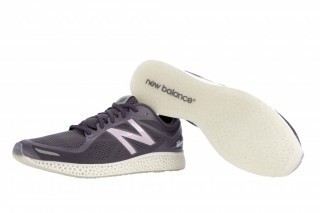
New Balance will begin selling the Zante Generate on April 15 for $400. It's the first performance-oriented running shoe with a 3D-printed midsole available to consumers. Photo: New Balance
(Editor’s note: This story updates a November 2015 story that announced New Balance’s initial plans to create shoes with 3D printed midsoles.)
On April 15, New Balance will be selling 44 pairs of new, state-of-the-art running shoes that will be the first to incorporate 3D printed midsoles. Several other brands have also been developing 3D printing for footwear, but the New Balance Zante Generate will be the first of its kind available to consumers.
The 44 pairs will be sold for $400 each at the New Balance Experience Store at 583 Boylston Street in Boston and on NewBalance.com beginning at 9 a.m. ET. (The brand is releasing 44 pairs as a nod to New Balance owner and chairman Jim Davis, who bought the company 44 years ago.)
VIDEO: Watch a New Balance Video Explaining Its 3D Printed Shoe
The new midsoles leverage the benefits of 3D printing and breakthroughs in materials science to achieve an optimal balance of flexibility, strength, weight and durability in an intricate honeycomb midsole structure, the company said in a release. “Within this incredibly flexible midsole, hundreds of small, open cells provide cushioning and structure,” the release said.
The upper of the Zante Generate is taken from the Fresh Foam Zante v2, which features a bootie construction with an engineered mesh through the midfoot to allow for soft, supple support. The shoe will have a 6mm heel-toe offset. The 3D printed midsoles are being manufactured in the U.S. and assembled by New Balance’s factory in Lawrence, Mass.
RELATED: How New Balance Makes Running Shoes in America
Through an exclusive partnership with 3D Systems, New Balance is creating midsoles made from a newly developed elastometric powder and a process known as selective laser sintering (SLS). That process involves converting the DuraForm TPU Elastomer into solid cross-sections, layer by layer, using a laser.
“New Balance is at the forefront of 3D printing and has been utilizing this exciting and innovative technology to customize product for our athletes for a number of years,” New Balance president and CEO Robert DeMartini said in a release. “Our unique position as both a manufacturer and retailer allows us to bring the world’s first 3D printed running midsole to market. The Zante Generate demonstrates the strength of New Balance design and innovation and will allow consumers to own a piece of running technology history.”
New Balance, a privately owned Boston-based company, says the latest designs of the 3D printed midsole are based on underfoot pressure data from heel strikers with more cushioning elements in areas of higher average pressure. This data-to-design formula is similar to the protocol New Balance designers used to create the brand’s award-winning Fresh Foam collection.
Several other brands are also working on 3D printed footwear concepts, but this is the first announcement of a shoe that will be available to consumers.
New Balance has been developing its 3D printed footwear technologies for several years. In 2013, it developed track spikes for middle-distance runner Jack Bolas with a data-customized, 3D-printed spike plate, the first time the technology has been used in competition. In 2014, Kim Conley won the 10,000-meter run at the U.S. championships in a pair of custom-printed spikes. The brand has also used the technology to create customized footwear for baseball and soccer players.
“In 2013 we said this was the future of footwear manufacturing and today we are proud to bring the future to consumers with a fully 3D printed midsole,” DeMartini in a previous statement. “With 3D printing, we are able to pursue performance customization at a whole new level.”
RELATED: How New Balance Developed the 1500v2 for Ironman Champ Sebastian Kienle
The post New Balance Selling $400 3D-Printed Running Shoes in Boston appeared first on Competitor.com.
April 10, 2016
Indoor Marathon World Records Shattered in New York City
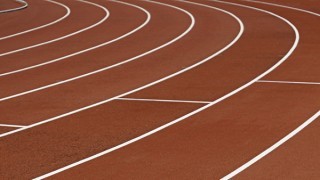
Imagine circling a 200-meter banked indoor track 211 times in one continuous run.
That’s what seven runners did Saturday in New York at the inaugural Armory NYC Indoor Marathon. In the end, both the men’s and women’s indoor marathon world records were broken at the New Balance Track & Field Center at The Armory—Malcolm Richards for the men in 2:21:55 and Allie Kieffer for the women in 2:44:44.
Michael Wardian held the previous men’s record in 2:27:21, and it was actually broken by two men Saturday. Besides Richards, Anthony Migliozzi also bettered Wardian’s mark, finishing second in 2:24:02. Third place was Calum Neff—you may remember him from his half marathon record pushing a stroller earlier this year—in 2:28:52.
As for Kieffer, she was the only woman to enter the race (along with six men) and she broke the women’s record by more than nine minutes (Monika Kalicinska had the mark in a time of 2:53:53).
An indoor marathon is an interesting race— weather is not a factor, nor are there any hills. But navigating more than 400 turns definitely has an impact. Richards ran the U.S. Olympic Trials Marathon in February, finishing 18th in hot conditions in a time of 2:18:40—about three minutes faster than his indoor marathon on Saturday.
“You have to have some mental games you play,” Richards told the New York Times. “Just even having the music going, that helped.”
Both Richards and Kieffer earned $6,000 for their efforts—$5,000 for breaking the record and $1,000 for winning the race.
The post Indoor Marathon World Records Shattered in New York City appeared first on Competitor.com.
Photos: Rock ‘n’ Roll Raleigh
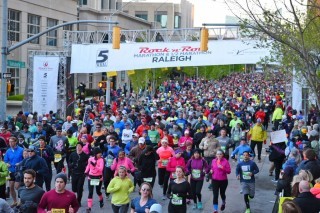
Hometown hero Bobby Mack won Sunday’s Rock ‘n’ Roll Raleigh Marathon & Half Marathon presented by WRAL. The 31-year-old Mack, who lives and works in North Carolina’s Capital city, broke the finish-line tape for the 13.1 miles in a blazing one hour, eight minutes and two seconds—a full 35 seconds ahead of rival Christian Thompson who finished second in 1:08:37.
Photo Gallery
1 of {count}
Back to Start
View Larger Image

View Larger Image

View Larger Image

View Larger Image

View Larger Image

View Larger Image

View Larger Image

View Larger Image

View Larger Image

View Larger Image

View Larger Image

View Larger Image

View Larger Image

View Larger Image

View Larger Image

View Larger Image

View Larger Image

View Larger Image

View Larger Image

Related Galleries

Photos: 2016 Rock ‘n’ Roll Raleigh Marathon and 1/2

Photos: 2016 Rock ‘n’ Roll Raleigh 5K
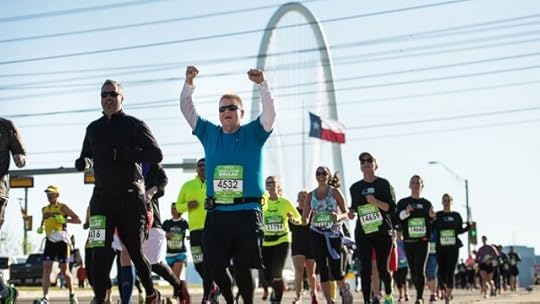
Benson Chesang and Kelsey Bruce Triumph at Humana Rock ‘n’ Roll Dallas Half Marathon
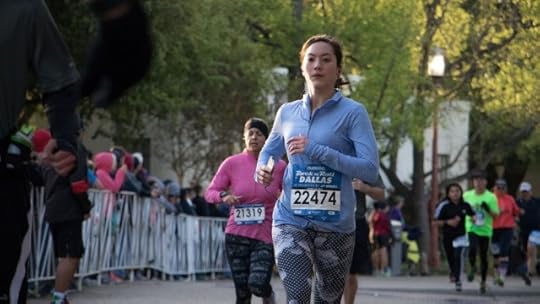
Runners Rock the ‘Big D’

More Galleries
The post Photos: Rock ‘n’ Roll Raleigh appeared first on Competitor.com.
Ryan Hall's Blog
- Ryan Hall's profile
- 21 followers



